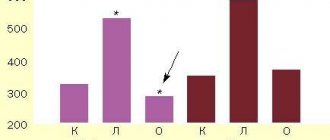Useful articles
Smoking is a harmful habit that annually claims millions of lives across the planet. Many people, realizing this and feeling the consequences of their addiction to tobacco products on their own health, sooner or later decide to quit smoking. However, at the same time they are faced with withdrawal syndrome: a sharp protest from the body, manifested by a number of symptoms. They vary in intensity and duration for different smokers. They depend on many factors: the individual characteristics of the body, the measures that a person takes to prevent withdrawal, and so on. As a rule, the more experience a smoker has, the stronger and longer the withdrawal syndrome.
Content:
- Pathogenetic basis of tobacco addiction: 1.1. Why is it important to manage withdrawal symptoms when quitting smoking?
- Smoking withdrawal syndrome: how long it lasts, main manifestations.
- How to ease withdrawal symptoms and get rid of tobacco addiction.
Tobacco smoking is one of the main causes of premature mortality in the world; according to WHO estimates, about 7 million people die annually from diseases caused by this addiction. But the results of an anonymous survey in which more than a million people participated are impressive - almost 60% are actually thinking about giving up cigarettes, and more than half of them are planning a visit to a specialized specialist. However, a serious obstacle to getting rid of this addiction is withdrawal syndrome; smoking does not cause it as quickly, and, of course, not as severely as alcohol or drugs. Nevertheless, vivid manifestations of withdrawal, and the psychological habit often “take their toll”, and the person again reaches for the pack, and is not stopped by the well-known consequences for the body. How realistic is it to cope with nicotine withdrawal on your own? What methods really help, and what are not worth spending money, time and effort on?
Literature:
- Bogoslovsky, Vladimir Alekseevich. About the dangers of smoking / V. A. Bogoslovsky. – 2nd ed., rev. and additional – Moscow: Center. scientific research Institute of San. education Ministry of Health of the USSR, 1998. – 37 p.; 22 cm. – (To help the lecturer).
- Ulanov, Vladimir Ivanovich. The harm of smoking / Vladimir Ulanov. – [Velsk]: Povazhye, [2012]. – 239 p. : ill.; 21 cm.
- Barabash, Pavel Ivanovich. How to quit smoking: (Practical guide to quitting smoking) / Pavel Barabash. – Khabarovsk: Publishing house DVAGP, B. – 56 p.; 20 cm. – (Modern psychotechnologies).
Cost of services
Field service SERVICES LIST PRICE Conclusion from binge drinking - “Triple drip” (Promotion for 3 summer months!) 6,500 5,000 rub. Withdrawal from binge drinking - Standard dropper (Promotion!) 3,000 rub. Conclusion from binge drinking - Double drip (Best price!) 5,000 rub. VIP - cleansing 7,000 rub. Withdrawal from binge drinking + simultaneous coding for 12 months 7,900 rub. Withdrawal from binge drinking + simultaneous coding for 24 months 9,500 rub. Consultation with a psychiatrist at home 5,000 rub. Psychiatrist-narcologist on duty at home (6 hours) 40,000 rub. Departure outside the Moscow Ring Road, for every 10 km of travel 500 rub. Visit of a narcologist to your home 1,500 rub. Transportation to the hospital accompanied by a doctor by agreement Penalty (if the patient refuses therapy) 3,000 rub.
Course therapies and additional services SERVICES LIST PRICE Metabolic therapy (for cerebral vessels, cardiac system and nervous system): 1 dropper 3,000 rub. Course of 5 droppers 12,000 rub. Hepatoprotectors (for the liver): 1 dropper 3,000 rub. Course of 5 droppers 12,000 rub. Nootropic therapy (for the brain): 1 dropper 3,000 rub. Course of 5 droppers 12,000 rub. Plasmapheresis 13,000 rub. Complex of tests + ECG 5,000 rub. Therapeutic inhalation with Xenon (1 liter) 5,000 rub. Therapeutic Xenon inhalation (1 liter) when paying 10 or more 4,500 rub. Ozone therapy 2,000 rub. Oxygen therapy 1,500 rub. ILBI (intravenous laser irradiation of blood) 2,000 rub.
Psychotherapy SERVICES LIST PRICE Single and intensive sessions: Psychological consultation in the clinic 3,500 rub. Single psychotherapy session (45 minutes) 3,500 rub. Intensive session (lasts up to 3 astronomical hours) 8,000 rub. Family counseling 5,000 rub. Courses: 4 sessions per month with a psychologist (1 time per week) 14,000 rub. 8 sessions per month with a psychologist (2 times a week) 28,000 rub. 12 sessions per month with a psychologist (3 times a week) 42,000 rub. 4 sessions per month with a psychiatrist (once a week) 13,000 rub. 8 sessions per month with a psychiatrist (2 times a week) 24,000 rub. 12 sessions per month with a psychiatrist (3 times a week) 33,000 rub.
Promotions and discounts When you return to the clinic - 10% discount Discount on initial application based on recommendation - 15%! Payment for a taxi during hospitalization in a hospital (from 3 days) – up to 1,000 rubles. by check
- Please note that this price list does not contain a complete list of services . You can find a detailed list of services on the Prices . If you have not found the service you are interested in, please call us at +7 and get a free consultation from our specialist!
Pathogenetic basis of tobacco addiction
The name “nicotine” itself appeared in the middle of the 16th century, after the French ambassador to Portugal Jacques Nicot presented this strange remedy to Catherine de Medici. Since that time, smoking has quickly spread throughout the world and has long been considered a universal “cure” for various diseases and a “way” to pass the time pleasantly. Only by the middle of the last century was the negative impact of tobacco on health established and finally proven.
The harmful effects of tobacco smoke are caused not only by nicotine, but also by carbon monoxide and other combustion products (acetaldehyde, acetone, hydrogen cyanide, ammonia, etc.). But nicotine itself has a psychoactive addictive effect - the substance causes a feeling of pleasure and satisfaction by stimulating the production of dopamine and other neurotransmitters (serotonin, endorphins, γ-aminobutyric acid). In addition, nicotine also activates the production of adrenaline, which is accompanied by suppression of hunger, increased blood pressure and heart rate.
As a result, the natural ability to experience pleasure gradually atrophies, which is the basis for the development of smoking withdrawal syndrome, the symptoms of which appear even with short-term deprivation of cigarettes. A person’s emotional state is largely determined by the presence or absence of nicotine in his blood. The resulting vicious circle leads to the formation of a stable psychophysical dependence, which, according to some experts, is comparable in strength to addiction to soft drugs.
In addition, over time, the smoker develops peculiar “rituals” (the first cigarette with coffee, a smoke break after negotiations, etc.), which, as it seems to him, help him overcome various stressful situations, fatigue and boredom.
How does hashish addiction occur?
In some countries, hashish is used as a pain reliever. But in Russia it is banned. Therefore, to get it, you need to make some effort. Typically, the drug is used by people looking for an easy way to relax.
Hashish contains tetrahydrocannabinol , a compound that has a powerful effect on a person’s mental, emotional and physical state. It activates the production of serotonin and blocks the functioning of some nerve centers.
As a result, the addict feels euphoria and relaxes. His mood improves. Fear and anxiety disappear for a while. The addict becomes more sensitive to sounds and colors - the world around him begins to seem brighter, more beautiful and harmonious.
Why is it important to manage withdrawal symptoms when quitting smoking?
The consequences of prolonged smoking are:
- cardiovascular diseases;
- lesions of the respiratory tract (chronic bronchitis, obstructive pulmonary disease, predisposition to pneumonia, increased risk of infection with tuberculosis, legionellosis, etc.);
- malignant neoplasms;
- reproductive disorders;
- retardation of intrauterine and subsequent neuropsychic development in children born to smoking mothers;
- cataract;
- osteoporosis;
- thyrotoxicosis;
- gastritis and peptic ulcer, etc.
In general, a smoker loses up to 15 years of full life due to the early development of severe chronic diseases. This habit is dangerous not only for the addict himself, but also for those around him. A person exhales about 50% of tobacco smoke, and it contains almost 30 times more carcinogens than inhaled.
Signs of use
The sooner treatment for hashish addiction is started, the higher the likelihood that the addict will avoid serious illness. You can understand that a person is addicted to “weed” by the following signs:
- frequent lethargy and drowsiness;
- constant loss of strength;
- memory loss;
- difficulties with orientation in space;
- inability to concentrate on anything;
- violation of the logic of thinking;
- slow speech;
- demonstration of indifference to what is happening around;
- lack of motivation to do something;
- periodic outbursts of aggression and bouts of causeless laughter;
- visual and auditory hallucinations;
- Red eyes;
- constant thirst;
- increased appetite.
In fact, it is difficult not to notice that something is wrong with a person. Usually, relatives quickly begin to understand that there is a drug addict in their family.
Smoking withdrawal syndrome: how long does it last, main manifestations
On average, a smoker's daily need for nicotine ranges from 10 to 40 mg, while one cigarette contains from 0.1 to 0.5 mg of this substance. Withdrawal syndrome develops approximately 2–4 hours after the last cigarette smoked (the exact period depends on the severity of addiction), its symptoms progress gradually and reach a peak on days 1–3.
The following symptoms are characteristic of nicotine withdrawal:
- dryness and irritation of the oral mucosa, pain and sore throat, cough;
- feeling of general malaise, weakness;
- causeless anxiety and restlessness;
- decreased mood, depression, hysteria and irritability;
- sleep disorders;
- an almost constant feeling of hunger - a person tends to replace smoking breaks with sweets and various snacks;
- impaired concentration, decreased performance, fatigue;
- headache.
If you suffer from withdrawal symptoms when quitting smoking, how long will it last is the main question that the patient asks the narcologist. Without medication and/or psychotherapy, the listed symptoms are most pronounced during the first 7 days, then gradually decline, but generally persist for up to a month. However, the desire to smoke, especially in company, after drinking, against a background of stress, bothers the addict for a very long time - from 2-3 months to six months or more. Also characteristic is the desire to “binge” on smoke breaks, which can lead to noticeable weight gain.
Nicotine withdrawal
When a person decides to quit smoking, within an hour after giving up he begins to be tormented by a wild desire to light a cigarette. This craving intensifies with each passing hour. Scientists have discovered that if a quitter has cigarettes left, he may well delay the time to smoke, and his body can easily tolerate this. If there are no supplies, the urge to smoke becomes unbearable. Although, in the presence of cigarettes, a dependent person is able to fight cravings only for a few hours.
A feature of nicotine withdrawal is its rapid onset.
Already from the first day, the patient experiences an irresistible craving for a cigarette, he is bothered by the following symptoms:
- Anxiety;
- Emotional stress;
- Excessive irritability;
- Depression and difficulty concentrating;
- A smoker experiences hand tremors;
- Headache;
- The pressure begins to jump;
- Shortness of breath and cough;
- Hunger increases, which cannot be eaten with food or washed down with coffee.
Such signs arise due to the cessation of nicotine entering the body, causing the body to begin to restore its normal activity.
How to ease withdrawal symptoms and get rid of tobacco addiction
As practice shows, only a few managed to quit smoking on their own. Most addicts (about 90%) return to cigarettes a few months after quitting. It is for this reason that it is better to contact a specialized specialist.
Doctors usually use combination treatments. These are nicotine-containing medications combined with psychotherapy. This approach makes it possible to increase the effectiveness of therapy by 4–6 times. In accordance with international recommendations, doctors use the so-called “5A” tactics, which consists of the following:
- Ask. By and large, this is a kind of history taking and finding out the current smoking status (how long ago, how many cigarettes per day, etc.).
- Advise. The doctor talks in detail about the dangers of such a habit; visual illustrations of potential complications (cases from medical practice, photographs) provide a good effect.
- Assess. At this stage, the specialist impartially assesses the addict’s motivation for treatment. Usually, special questionnaires are used for this purpose.
- Assist. The doctor draws up an individual treatment plan, offers coding methods, and talks about the advantages and disadvantages of the proposed medications.
- Arrange. Considering the rather sad statistics, a narcologist must constantly support the patient in his quest to finally quit smoking. Individual and group psychotherapy sessions are indicated, and, if necessary, adjustment of medication prescriptions.
The most effective way to relieve withdrawal symptoms is nicotine. But not “cigarette”, but medicinal. This type of therapy is called replacement therapy. Nicotine-containing patches (provide long-term retention of the effect), lollipops, sprays, and chewing gum are used. To achieve the desired result, such drugs are prescribed for 8–10 weeks. An excellent addition to medications is hypnotic coding.
Withdrawal syndrome after smoking is a difficult experience, but modern treatment methods can significantly alleviate it. But the result is worth it! Numerous studies confirm that after quitting cigarettes, overall health improves, the frequency of stress and mood swings decreases, and higher levels of happiness and life satisfaction are also noted.
Prevention
Withdrawal is one of the main symptoms that a person has already developed alcohol dependence. If, when leaving a binge, a person returns to uncontrolled alcohol consumption each time, this will lead to worsening withdrawal symptoms. As a result, alcoholism will only get worse.
Patients treated at home or in a hospital should receive comprehensive therapy. At the next stage, they need treatment for alcoholism, otherwise they will no longer be able to cope with this problem on their own.








